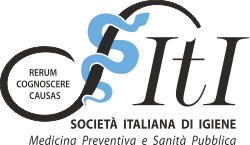All vaccines contain the microorganisms, viruses or bacteria, against which they protect in a weakened (attenuated) or completely inactivated form. In other cases, they may contain only some components of the microorganism, known technically as antigens [1 2 3]. The methods of the "construction" of vaccines therefore vary from preparation to preparation. The most common steps taken for the production of vaccine preparations are briefly described below:
- Attenuation of viruses: this step involves weakening the virus which will then have great difficulty reproducing within the human organism, so as to be able to trigger the immune system but not to cause the disease. Sometimes, albeit rarely, during the replication of the weakened virus, mild symptoms may occur that resemble those of the disease in question. Measles, mumps, rubella and chickenpox vaccines are made using this technique [1 2 3].
- Inactivation of the virus: the viruses are completely inactivated (‘killed’) with chemical processes, so that the virus cannot multiply or cause disease. Vaccines against poliomyelitis (Salk vaccine), hepatitis A, and some types of flu vaccines are made in this way. Unlike vaccines with attenuated viruses, preparations prepared with this strategy do not cause, even in a mild form, the symptoms of the disease they protect against [1 2 3].
- Containing viral components: with this method, a specific component of the virus is removed from the microorganism and used to build the vaccine. One recent development is the ability to synthesise a part of the virus in the laboratory which can then be inserted into the vaccine preparation. Some examples of vaccines built using this strategy are the so-called ‘sub-unit’ flu vaccines which contain only two proteins of the influenza virus, or the hepatitis B vaccine composed of a protein found on the surface of the virus and reproduced in the laboratory using the recombinant DNA technique. In recent years, vaccines against the human papillomavirus (HPV) have been made using this technique, containing only the virus-like particles (VLP) that resemble the virus as they mimic the outermost part, while lacking the genetic material, and therefore are unable to replicate [1 2 3].
- Containing bacterial components: in the case of bacteria capable of causing disease through the production of toxins, the vaccines are built by chemically inactivating the toxin (after being inactivated the toxin is called anatoxin). After its inactivation, the toxin is unable to cause the disease but retains its ability to trigger the immune system. Vaccines against various serious diseases such as diphtheria, tetanus and the new acellular pertussis vaccines are built using this method. Another technique for constructing vaccines against bacteria is to use some components of the glucidic (polysaccharide) coating of the bacteria that can induce stimulation of the immune system. Vaccines against Haemophilus influenzae type B, pneumococcus and meningococcus C [1 2 3] are constructed in this way.
Since vaccines containing components of viruses and bacteria are sometimes unable to induce optimal stimulation, other substances capable of increasing protection against microorganisms can be used in the construction of the vaccine. Some examples are the so-called adjuvant substances used in the case of vaccines containing parts of the viruses, such as some flu and HPV vaccines, or bacterial anatoxins. In the case of vaccines containing bacterial polysaccharides, these are bound (conjugated) to a protein capable of triggering a long-lasting immune response.[1 2 3].
Reaching the production stage
The construction of a vaccine as reported above is only the first small step towards the production of a preparation that can be used in daily practice. Before being used in vaccination programmes, a new vaccine must in fact undergo a lengthy period of research aimed at demonstrating its safety, the tolerability of its side effects and its efficacy, and thus its ability to protect against the disease in question.[1 2 4 5]
The preliminary phases of research take place in the laboratory (in vitro) and are aimed at identifying which component of the microorganism will be able to best stimulate the immune system, generally through the use of cell cultures, and sometimes by administering the potential vaccine to laboratory animals [1 2 4 5]. With the advent of new genetic engineering techniques, this part of the experimentation process is increasingly carried out using computers (in silico). In fact, through the use of computer models, it is possible to promptly predict which components of the microorganism will be capable of interacting effectively with human cells[1 2 4 5].
Once this preliminary phase has been completed, a form of the vaccine is constructed that is very similar to the one that could be used in daily practice and the safety, tolerability and efficacy of the preparation are studied, in clinical studies, in humans [ 1 2 4 5].
Human research is classically divided into three phases involving an increasing number of volunteers (from a few dozen to many thousands of people). Each phase of the research is approved and stringently controlled by international and national drug regulatory agencies and local ethics committees [1 2 4 5].
- Phase I studies: small groups of volunteers take part (a few dozen) and the aim is to confirm the safety of the preparation demonstrated in the preliminary stages of basic research and to assess its tolerability (the frequency and severity of the vaccine's side effects) in humans.
- Phase II studies: hundreds of volunteers take part and the aim is to confirm the safety and tolerability of the vaccine and demonstrate its immunogenicity (its ability to induce a valid immune response) in humans.
- Phase III studies: thousands of volunteers take part and the studies are generally carried in various research centres (multicentre studies). They aim to definitively confirm the safety, tolerability and immunogenicity of the vaccine on a very large population of subjects.
Once the phases of clinical research have been successfully completed, the vaccine is authorised for use by international and national regulatory agencies that independently acquire and evaluate the results of phase I, II, III studies [1 2 4 5].
Even after its authorisation for use, the new vaccine, as with all new drugs, is monitored to detect side effects and/or problems that may have eluded previous clinical studies, as they occur very rarely or in the (very) long term, or only under particular conditions. Furthermore, after the marketing of the vaccine, it is possible to evaluate its effectiveness in the field (meaning the ability not only to stimulate a good response in humans, but also to prevent the diseases caused by the microorganism against which the vaccine acts) [1 2 4 5].
We can therefore state that the procedures for the construction, testing, marketing and relative monitoring of a new vaccine are much lengthier and more complex than any other drug.
Sources / Bibliography
- Plotkin S, Orenstein W, Offit PA. Vaccines, 5th edition, Philadelphia: Saunders, 2008
- Bartolozzi G. Vaccini e Vaccinazioni, Seconda Edizioni, Elsevier: 2005
- Centers for Disease Control and Prevention (CDC). Vaccines and Immunization: Basic and Common Questions (ultimo accesso 03/04/2013)
- Agenzia Italiana del Farmaco (AIFA). Oggi parliamo della sperimentazione clinica dei farmaci (ultimo accesso 03/04/2013)
- World Health Organization. Vaccine Research and Development (ultimo accesso 03/04/2013)



